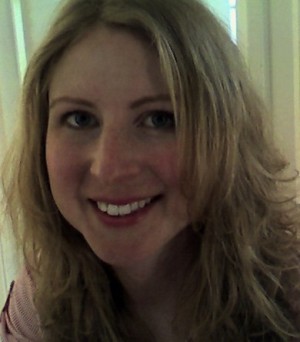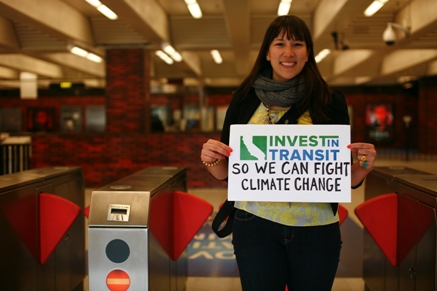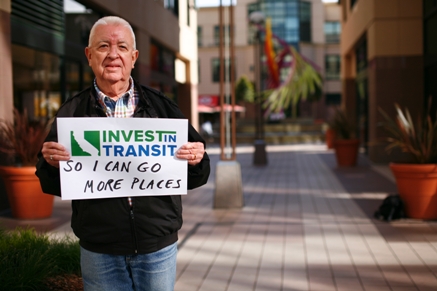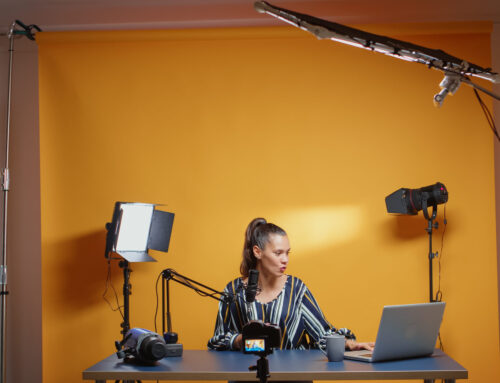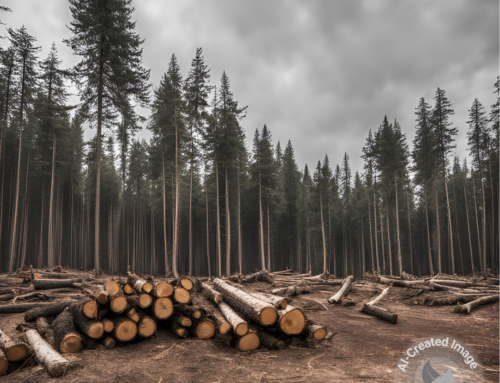You know what they say, “A picture is worth a thousand words.” A good photograph captures your audience’s attention in ways that words can’t. And using pictures you took with your cell phone can’t do as much as professional looking photos. But who can afford a professional photographer? Marta Lindsey with TransForm shares how she handled this dilemma in a two-part guest blog post.
Guest Post by Marta Lindsey of TransForm
When you sit down to tackle your latest communications project, whether it’s an annual report or a new landing page for your website, I’m guessing you’re not thinking, “Wow, I have such a great photo bank. However will I choose which ones to use?”
At the nonprofit where I work, TransForm (we’re all about bringing better public transportation, walking, and biking options to communities across California), we’ve always scrambled to find enough decent images. It’s led to me to take desperate measures at times. For our 2010 annual report, I actually bought a stock photo of a woman standing by a generic-looking bus and had our graphic designer replace the bus with a local one. Not ideal.
So I decided to organize a series of photo shoots using all volunteers and a shoestring budget. Now with several under my belt and a photo bank that will keep us set for at least a few years, I want to share what I learned so you can do the same. Please add your tips in the comment section at the bottom.
Decide What You Want… Very Specifically
First, put your communications director hat on:
– What kind of images will best tell the story of our work?
– What kind of images will resonate with our target audiences?
– Who should be in our photos: Clients? Donors? Volunteers? Everyday people? People who represent our target audiences? People in action doing certain activities?
– Are there important things about the background we need to capture? Are there important props?
– Are there ways we could use signs in photos? (Check out our Invest in Transit campaign photos by our superstar volunteer Brandon Matthews.)
– Which images in our organization’s existing materials really worked? What would be great to have more of?
Then put your art director hat on:
– What photos on other organizations’ websites and in magazines have a look and feel we want?
– Do we have an existing look and feel of our photos we want to build on?
– Do we want the models looking casual or professional? Candid or eye contact with the camera… or some of each? Group shots or portraits? Note: if you want to make an outdoor scene look real, you may need extra models to be in the background.
Now it’s time to create a checklist, like a wedding photographer does, of the specific shots you want to get in terms of models (age, ethnicity, what they’re doing, what they’re wearing), location/background, and props (if any). The more detail the better, as you’ll share this with your photographer, plus use this in coordinating the shoot.
Finding a Photographer
If you have money budgeted for photography, by all means, hire a professional. But if not, it’s not that hard to find a talented volunteer since amateur photography is a booming hobby. Just start putting the word out through your organizations’ network and you’ll likely be pleasantly surprised.
Here are some things to discuss when considering someone:
– Ask for a portfolio and about their experience. If they aren’t serious enough to be able to show you a large sample of their work, they probably aren’t ready to do a photo shoot. Be sure their work looks professional, not point-and-shoot. If it’s all scenic shots, they might not have sufficient experience with portraits or action shots.
– Ask for a time commitment and deadline. One photo shoot at one location will take two to three hours of the photographer’s time and they should be able to share all the images (RAW and JPG) with you within a couple weeks. Getting them to commit to more than one shoot is ideal so you can develop a strong working relationship and get more shots.
– Talk about the ways you’ll be using the photos and what that means for look and layout. At TransForm, we often need breathing room around the subjects of a photo to add text or do cropping for banner images so ask the photographer to keep this in mind. We like a blurred – but not completely blurred – background and sharp subjects, which impacts how they shoot in terms of f-stop and shutter speed.
– Start off on the right foot with collaborating and communications. You need to be a team with this person in order for you to get the photos you need and for them to succeed. Talking through this document could help ensure you’re both clear on expectations.
– Ask about their camera, lenses, how they shoot, and their range of experience.
Note: I’m not a professional photographer and urge you to find someone in your network to help vet a volunteer and translate what you want into photography-speak.
And of course don’t forget to thank your photographer profusely for their valuable contribution. Their photos will boost your organization’s mission in countless ways for a very long time.
Finding Models and Giving Them a Positive Experience
Getting people willing to participate in a photo shoot is pretty easy. Who doesn’t want to be a model for a day? Sites like Craiglist and VolunteerMatch are a good place to start. So are your organization’s supporters, as it’s a fun way for them to help your mission. Photo shoots make for very Facebook-friendly events, too: just our staff spreading the word this way attracted a lot of models.
But if you have specific needs in terms of age and ethnicity, or are looking for a real mix of folks, there are ways to get this:
– Be explicit in what you want. When we wanted to get shots of someone who uses a wheelchair, we said this. Somehow this led our posting to get on a disability rights list and we had several people respond. Also consider language like, “Please send your age and ethnicity as we are trying to get a mix of people. We will confirm if you’ve been selected and give you full details for the shoot.” This allows you to attract a big pool to pick from.
– Use your local casting network for actors and models (here in the Bay Area, it’s Casting Networks San Francisco). You can be incredibly specific in what you’re looking for this way, get exactly that, plus give someone experience who’s looking for it.
– Include “No experience needed” in your outreach so no one feels intimidated about participating.
Now that you’ve got your models, you want to be sure they show up and have a positive experience. Here are some tips:
– Give them plenty of information beforehand and that day (including your cell phone). What should they wear (bright colors, casual, etc.)? Should they bring any props or a change of clothes? Will any snacks and drinks be provided? How long will it take? Should they expect some standing around (the answer is yes)?
– Send an email thanking them for participating the same day if possible and share the images with them as soon as you have them. Note: be sure when you share them that you do this in a way that keeps the images private and let’s them know not to share them, unless you’re okay with that.
– Be sure to give them opportunities to stay involved like signing up for your emails. People tend to get excited about your organization when they participate in this kind of thing.
Marta Lindsey is the Communications Director at TransForm. She’s also very involved in the new Bay Area Cause Communications Community, which brings together nonprofit communications professionals monthly to share expertise, build new skills, and support one another.

